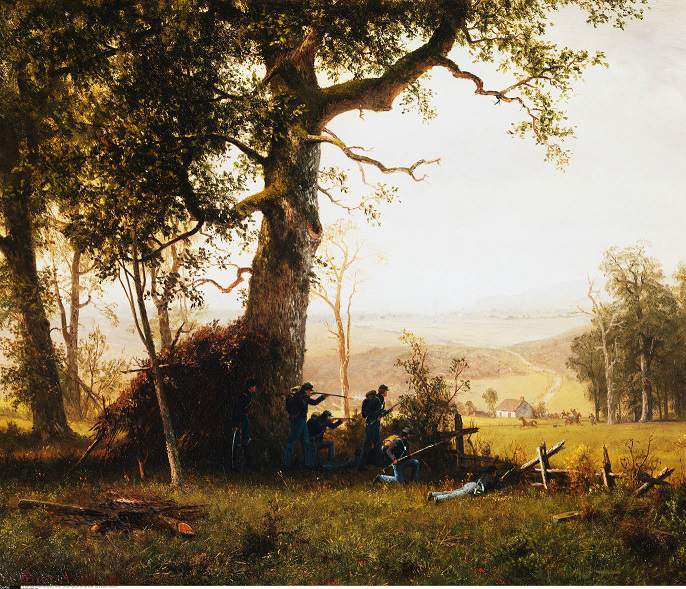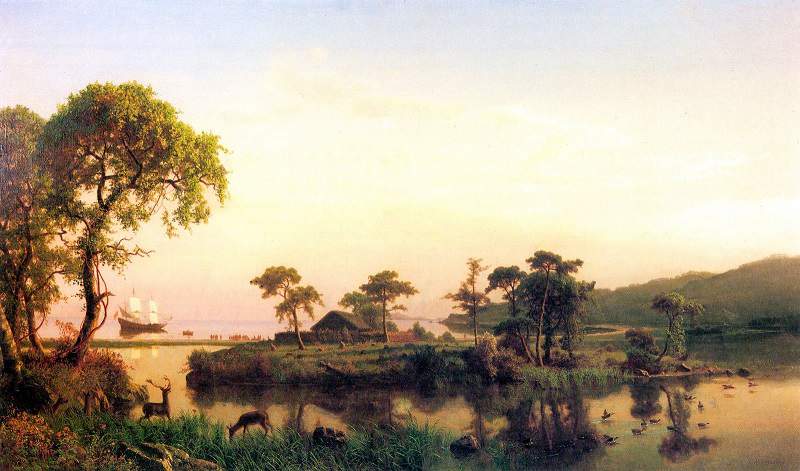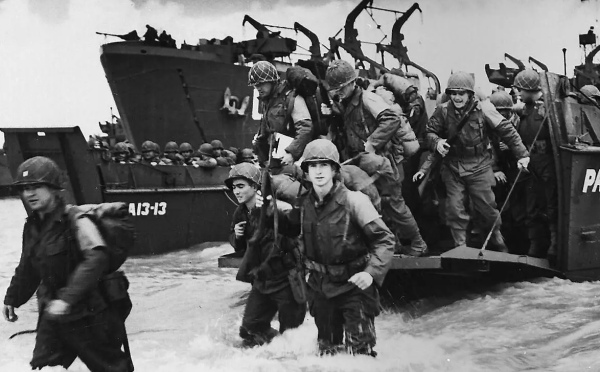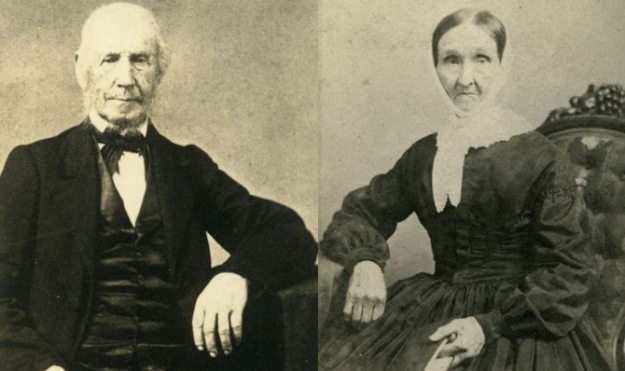“Gosnold At Cuttyhunk” – Albert Bierstadt (Wikipedia)
Series Introduction
Welcome to the sixth installment of the series “Historical Personages of New Bedford.” The previous five installments can be found by using the keyword “personage” in the search window in the column at the left or click here.
My intention with this series is to shine some light on the lesser known names and figures of New Bedford’s past.

Albert Bierstadt (1830-1902) (Wikipedia)
I won’t focus on the more popular and well-known figures since they have not only been covered in substantial depth, but information about these figures is something most people already have a cursory knowledge of. Though redundant to say, if any more information is desired, it is readily available and easily accessible.
Some of these great and popular figures got to be well known, wealthy, or famous on the shoulders of names vaguely recalled or ne’er heard. I don’t want to swing all the way to the other side and overcompensate by saying that these great figures would be no one without those you haven’t heard of. Perhaps they would have, but I think since history has traditionally ignored the lesser known figures, let’s give them their due!
Germans In America
In this article, I want to spotlight and showcase the talents of German-born, Romantic painter Albert Bierstadt (1830-1902). While he was born in Solingen, Germany he was a long time resident and fixture in New Bedford for almost two decades. He was raised in his family home which was on the northeast corner of Acushnet Avenue and Mill Street. The house built in 1780 was called the George East House. He found inspiration for his work in New England’s natural scenery and his stunning creations in some cases could be said to rival or even better it. His talent is too breath-taking to not share.

Bierstadt Family Home built in 1780 (1832-1862) (Whaling Museum)
German-Americans make up the largest ethnic group in the United States and they began heading to the New World in the 1670s pushed out of their home country because of lack of perceived freedoms, land resources and religious persecution. Of course, talk of the economic flourishing and opportunities were an attractive feature as well.
They brought with them their music, customs, foods like hamburgers, hot dogs, bratwurst, beer, kindergarten and even the concept of the Christmas tree. Most of the Germans who immigrated were simple farmers. As with all ethnic groups, Germans began to flock together and form tight-knit communities. In the case of German-Americans these little communities were called “Germanias.” Germans who came to New Bedford began to congregate in a village called – surprise, surprise – Germantown!
Germantown and German Culture in the Region
Germantown was located in the North End and to this day is still home to some 5,000 German-Americans. There were a number of German cultural contributions to the city of New Bedford, including a Rheinberger Club or Sängerbund which was a German singing club. Like the Cape Verdean or Portuguese Clubs there were German only clubs like the Independent Order of the Red Men on North Second Street, and the Order of the Iron Hall on Purchase Street. Surely, there were eateries, butcher shops, and more.

Mount Corcoran (Wikipedia)
Sadly, you wouldn’t know it as it seems the cultural connection to the Old World has died out. I would love to see a small section of the city have a German characteristic akin to what we see in the South End with the Portuguese community. Signs, business, restaurants, eateries, and more in German.
Having spent time living in Germany, I would love to enjoy another Altstadtfest, hear some Polka, eat some Currywurst, or Pommes Frittes with curry-ketchup. We do have an Oktoberfest though, don’t we…hmmmmm.
Anyhow, our protagonist Mr. Bierstadt – whose surname by the way, interestingly enough means “City of Beer” – came to New Bedford as a one year old in 1831. He stayed for twenty two years before moving back to Germany to study at prestigious art schools for a few years. In essence, he was a bonadife New Bedford denizen, since he had no recollection of Germany and up to the age of twenty two only knew New England. When he finished his schooling in 1858, he returned to America and traveled about.
His Life Work
As with many artists, including literary, New England’s landscape left a deep, indelible impression on Bierstadt and it threaded his work for the rest of his life. The seasons, flora, fauna, foliage, and history of the region can take on an almost spiritual hue. Bierstadt was quite the prolific painter and had over 500 original creations. His work is featured in museums across the world, including right here in New Bedford at the Whaling Museum.

“Guerrilla Warfare” (Wikipedia)
Bierstadt had a central home in Irvington, New York where he kept his studio. He would spend long amounts of time abroad and was rarely in one place for long. He was received well in his day, found critical and popular acclaim and at one point even won a private reception with Queen Victoria.
He won many awards, and had no trouble selling his paintings for moderate amounts of money. In contrast, near the end of his life his work evolved as it does for many artists. He fell out of favor of critics, who felt his work became too theatrical. With the loss of critical acclaim, he began to fall out of the popular eye. Sadly, at the time of his death in 1902 he was virtually forgotten.
Without Further Ado
There is no real point in describing Bierstadt’s work. Not being an artist, I would do a disservice to Bierstadt and his pieces. Even if I were an artists and capable, there are no amount of words in any combination that would do his work justice. The most pragmatic thing to do is just end the article and let his pieces speak for themselves.
Because he was so prodigious and had such a massive volume of work, I’ve cherry picked some of what I believe to be his most stunning. Of course, that is completely a subjective process and if you would like to see more of his work, there are a number of his images available of course, on Google images.
 New Bedford Guide Your Guide to New Bedford and South Coast, MA
New Bedford Guide Your Guide to New Bedford and South Coast, MA









